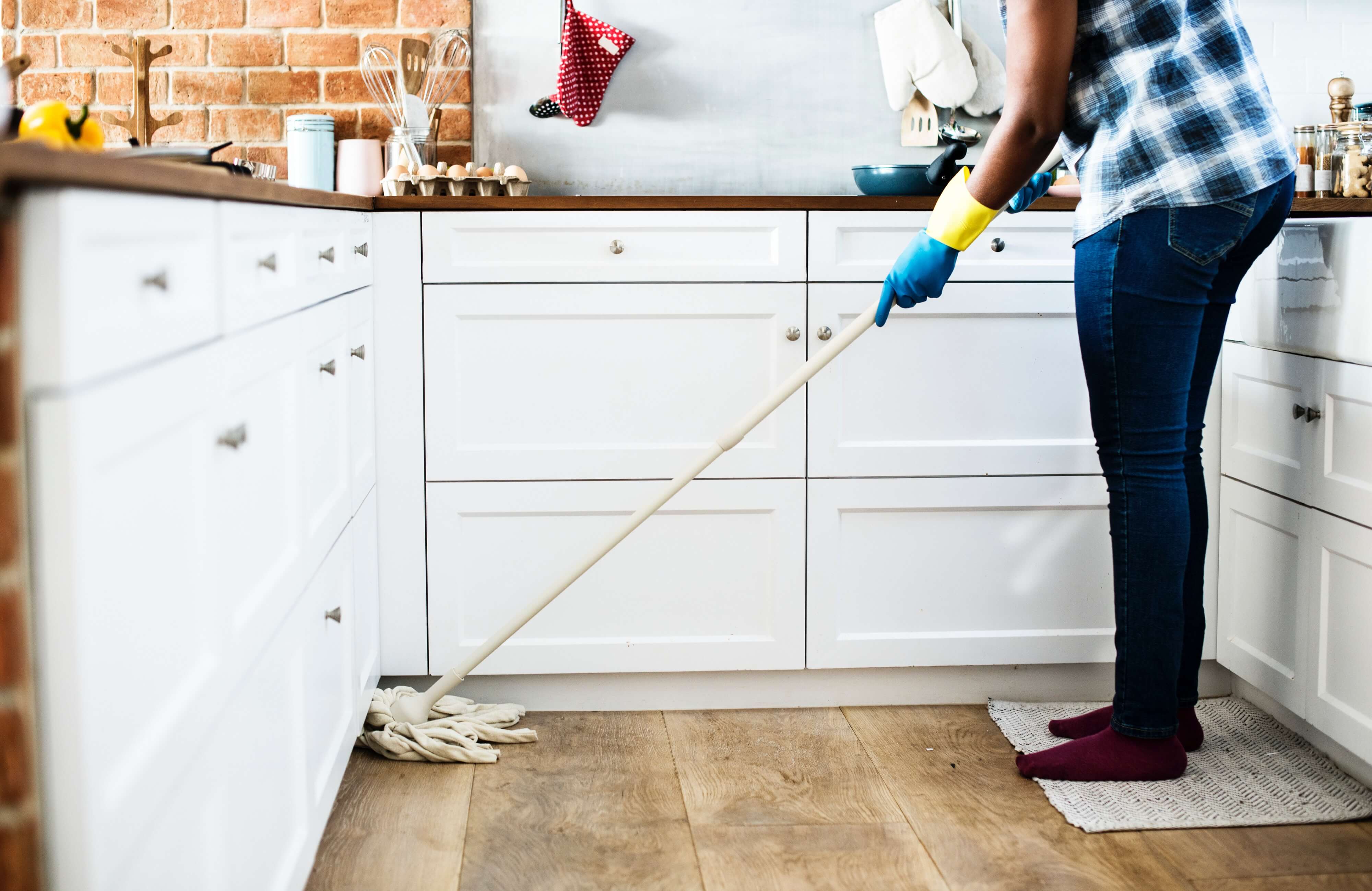Important Tips for Everyday Cleaning: Just How to Defrosted and Cleaned Every Few Months for a Fresh Property
Recognizing the Requirement for Completely Disinfecting and Disinfecting Regularly Touched Surfaces in High-Traffic Areas
In the realm of public health and security, the thorough disinfection and sanitization of frequently touched surfaces in high-traffic locations stand as critical measures in avoiding the spread of damaging virus. The significance of this method expands much past mere sanitation, delving right into the realm of condition prevention and neighborhood wellness. By discovering the numerous elements of surface area sanitation, from the threats associated with ignoring cleansing methods to the efficient approaches that can be used, a clearer understanding arises of the vital role these techniques play in guarding public health. As we browse this discussion, it comes to be evident that the effects of complete surface area sanitation reverberate not just within the confines of a particular environment yet likewise resonate on a wider scale, affecting the health and wellness of people across varied communal settings.
Importance of Surface Area Disinfection
Highlighting the thorough disinfection of high-traffic surfaces is essential in maintaining a hygienic environment and preventing the spread of hazardous microorganisms. High-touch surfaces such as door takes care of, light buttons, lift switches, and kitchen counters offer as reproducing premises for microorganisms and infections. Regular sanitation of these surface areas is crucial to lower the threat of contamination and transmission of health problems.
By applying a durable sanitation method, services and organizations can produce a much safer environment for staff members, site visitors, and clients. Appropriate surface sanitation not just alleviates the spread of infectious illness but likewise instills self-confidence in the sanitation and security of the premises. This positive method demonstrates a dedication to health and wellness and wellness, which is particularly vital in high-traffic locations where the likelihood of direct exposure to microorganisms is enhanced.
Additionally, surface area disinfection plays an essential role in general infection control strategies. Integrated with hand hygiene practices, using masks, and keeping physical distancing, extensive disinfection of high-touch surface areas forms a detailed protection versus the transmission of harmful bacteria. Focusing on surface sanitation is a vital part of a holistic technique to health and wellness and security in common spaces.
Risks of Neglecting Cleansing Practices
Neglecting extensive sanitation of high-traffic surface areas substantially enhances the threat of microbial and viral contamination, presenting a significant threat to the health and wellness and security of people often visiting these rooms. Failing to apply correct cleansing practices can lead to the buildup and spread of damaging virus, consisting of germs and viruses, on often touched surfaces such as doorknobs, handrails, elevator switches, and countertops.

Additionally, disregarding the significance of thorough cleansing not just jeopardizes the health of individuals however additionally weakens initiatives to maintain a sanitary and tidy setting. It is crucial to recognize the value of appropriate sanitation methods in stopping the spread of infections and securing public wellness.
Effective Disinfection Techniques
To maintain ideal tidiness and decrease the risk of contamination on high-traffic surface areas, using effective sanitation techniques is necessary. One of the most effective and typical disinfection approaches additional reading is making use of chemical anti-bacterials.
An additional efficient method is using UV-C light. UV-C light has actually been revealed to be efficient in killing a wide selection of microbes by disrupting their DNA framework, therefore avoiding them from reproducing. Nevertheless, it is necessary to use UV-C light effectively, ensuring that the use this link proper intensity and direct exposure time are applied to achieve the desired sanitation results.
In addition, using heavy steam cleansing as a sanitation technique can be highly reliable, specifically on surfaces that are heat-resistant. Steam can penetrate permeable surfaces and kill bacteria, viruses, and various other virus effectively. When utilizing vapor cleansing, it is necessary to guarantee that the surface reaches the called for temperature level for an adequate quantity of time to ensure appropriate disinfection.
Effect On Public Wellness
The maintenance of high criteria of cleanliness and sanitation on high-traffic surface areas plays an important role in guarding public wellness. Regularly touched surface areas in locations with high step, such as doorknobs, handrails, elevator buttons, and bathroom facilities, serve as reproducing premises for unsafe virus.
In high-traffic areas like flight terminals, institutions, health centers, and public transport systems, the influence of strenuous sanitation steps can not be downplayed. Focusing on the sanitization of regularly touched surfaces is a proactive technique to promoting public health and wellness and enhancing the security of individuals in shared rooms.
Implementing Routine Cleaning Up Procedures
Quickly instituting and sticking to a regular timetable of cleansing procedures is critical for keeping the sanitation and safety of high-traffic surface areas. Routine cleaning methods are important in avoiding the buildup of bacteria and microorganisms on regularly touched surface areas, specifically in areas with high foot website traffic. By carrying out a methodical method to cleaning, companies can efficiently lower the danger of illness transmission and create a much healthier environment for workers, customers, and the general public.
To develop an effective cleansing schedule, it is vital to recognize high-traffic areas that call for regular interest. These locations may consist of doorknobs, hand rails, elevator buttons, restroom facilities, and common equipment. Applying a regular cleaning program that targets these surface areas multiple times a day can substantially minimize the spread of damaging microorganisms and infections.
Furthermore, using suitable cleansing representatives and disinfectants is crucial this to ensuring that surface areas are completely sanitized. Normal training of cleaning staff on proper cleaning methods and the relevance of adherence to the cleansing timetable is additionally important in preserving a hygienic atmosphere. By focusing on regular cleansing methods, organizations can advertise the wellness and health of people that communicate with these high-traffic surface areas.

Final Thought
Finally, it is critical to focus on complete sanitation and sanitization of regularly touched surface areas in high-traffic areas to avoid the spread of hazardous pathogens and keep public health. Overlooking proper cleansing techniques can raise the threat of contamination and transmission of illness. By implementing normal cleansing procedures and utilizing reliable disinfection methods, we can develop a safer atmosphere for everyone (Vacuum Carpets). It is necessary to acknowledge the importance of preserving clean surface areas in high-traffic locations to make sure the wellness of the neighborhood.
In the realm of public health and security, the meticulous disinfection and sanitization of regularly touched surfaces in high-traffic locations stand as vital actions in stopping the spread of damaging microorganisms. By exploring the different elements of surface sanitation, from the risks connected with overlooking cleaning protocols to the reliable methods that can be employed, a more clear understanding emerges of the vital function these practices play in guarding public health.In addition, utilizing vapor cleaning as a sanitation method can be highly efficient, particularly on surfaces that are heat-resistant. When utilizing vapor cleansing, it is important to make certain that the surface gets to the called for temperature for a sufficient quantity of time to ensure appropriate disinfection.
In final thought, it is crucial to prioritize detailed disinfection and sanitization of often touched surfaces in high-traffic areas to stop the spread of hazardous microorganisms and preserve public wellness.